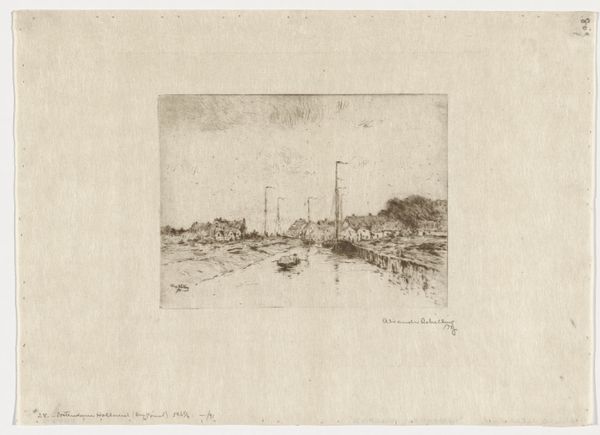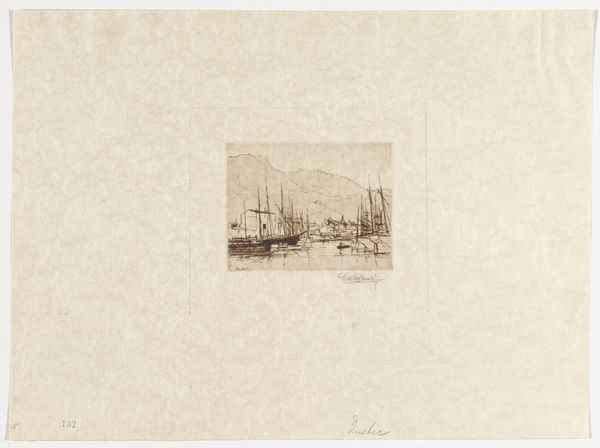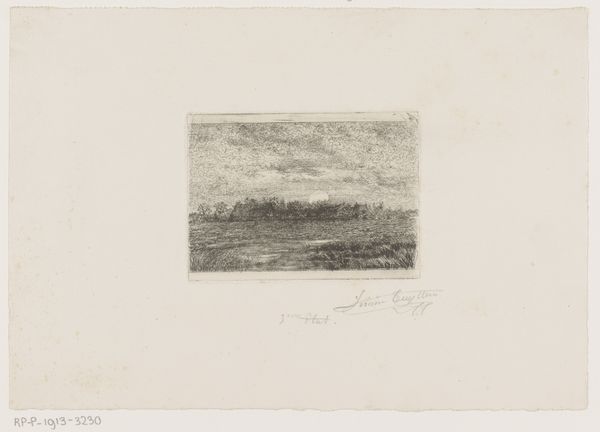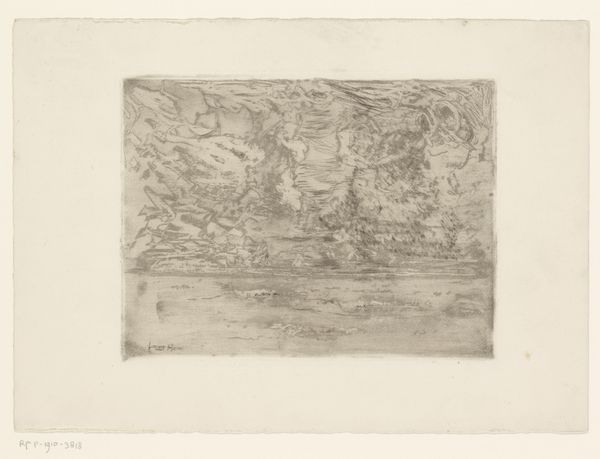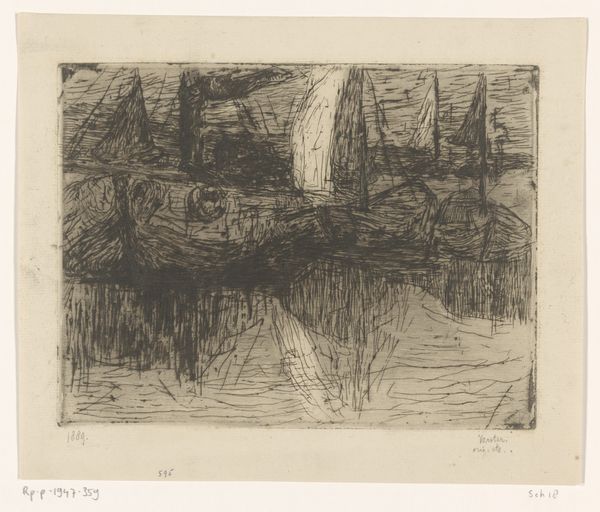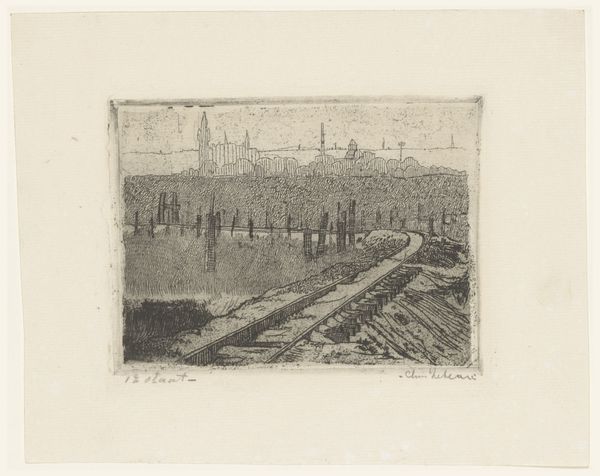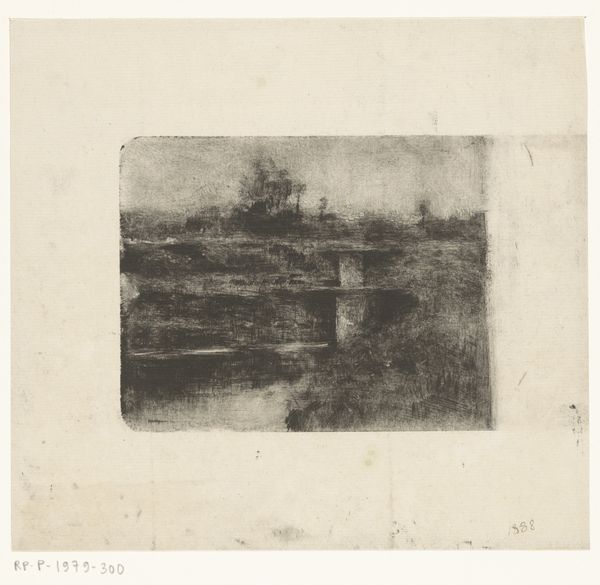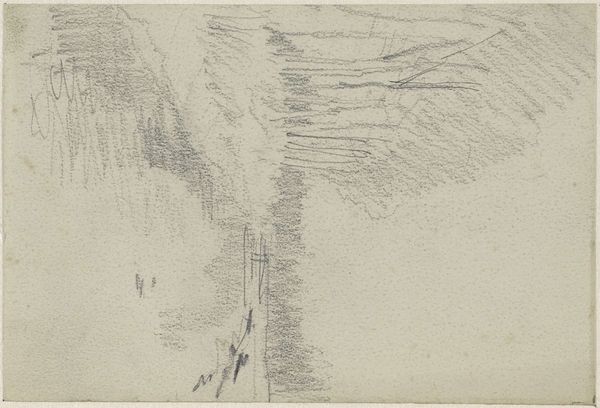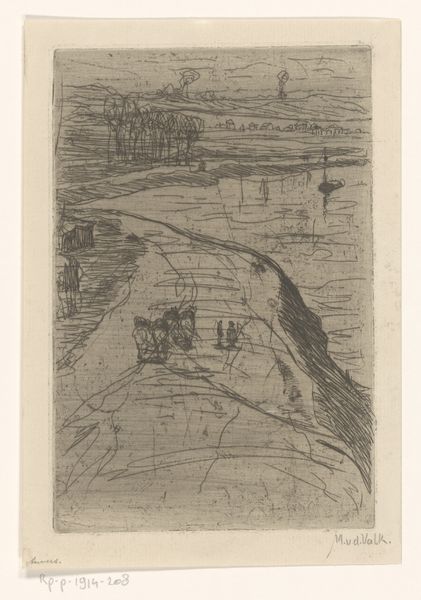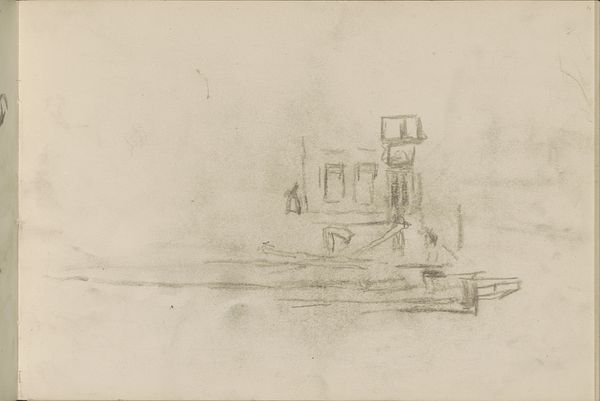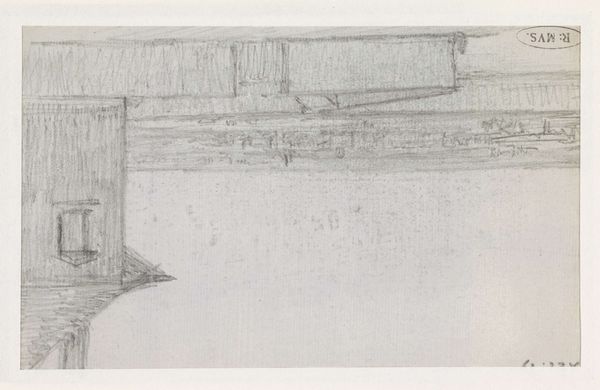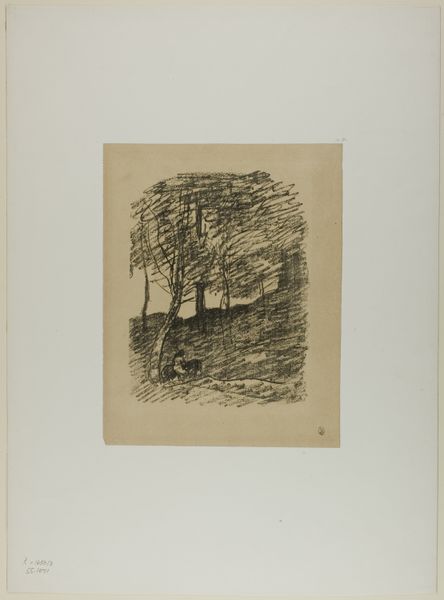
Wassende en zittende figuren aan de oever van de Ganges in Benares Possibly 1917
0:00
0:00
drawing, etching, ink
#
drawing
#
etching
#
pencil sketch
#
landscape
#
river
#
etching
#
figuration
#
ink
Dimensions: height 198 mm, width 247 mm
Copyright: Rijks Museum: Open Domain
Curator: This etching, tentatively dated to 1917, is by Wijnand Otto Jan Nieuwenkamp and titled "Wassende en zittende figuren aan de oever van de Ganges in Benares" —Figures Bathing and Seated on the Banks of the Ganges in Benares. Editor: The delicacy of line creates a sense of ephemeral lightness, almost like a dream being captured on the page. There's a profound quietude despite the activity depicted. Curator: Absolutely. It's all etching and ink on paper. Look at the way Nieuwenkamp used the etching process to create such fine, almost ethereal lines. It’s fascinating how the reproductive method is used to give a sense of light and space within this scene in Benares, India. Editor: The Ganges itself is visually subdued, almost like a mirror reflecting both the mundane and the spiritual activities along its banks. Water, in so many cultures, symbolizes purification and renewal; the bathing figures participate in this cycle, engaging with age-old traditions. Do you see, too, how Nieuwenkamp portrays the figures? Curator: I see them mostly as shapes. They become part of a complex system of production to make images for trade and distribution back in Europe. The colonial project gave rise to whole economies based on trading imagery; a kind of tourism. This would impact everything, from local artisan work to artistic trends back home. Editor: Perhaps, but Nieuwenkamp captures something more universal. Gestures of devotion, ritual immersion, connection to ancestors – are expressed through these anonymous bodies. That raised arm, maybe in prayer, echoes the minarets rising behind the town. Curator: I can certainly see how you interpret it in such a light! I will say though that thinking of it now, seeing how we can so clearly make assumptions about this culture that maybe miss what’s actually in play here because it all becomes fodder to make new works that are then, themselves consumed in a particular cycle of production...it certainly does make one wonder. Editor: I agree. This work prompts reflection on cultural exchange. Both on what remains unspoken but visibly resonant through form, but it also calls into question how such a culture or event can then in turn, also impact artistic expression and wider consumption. Curator: And that makes it an even richer experience to encounter, wouldn't you say? Editor: Absolutely.
Comments
No comments
Be the first to comment and join the conversation on the ultimate creative platform.

